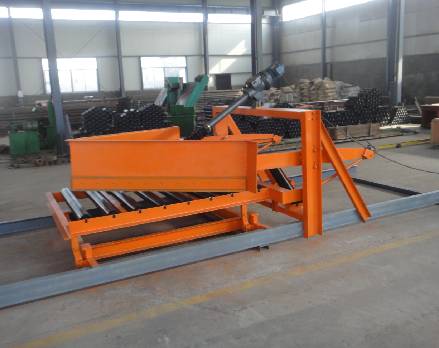 Afrikaans
Afrikaans  Albanian
Albanian  Amharic
Amharic  Arabic
Arabic  Armenian
Armenian  Azerbaijani
Azerbaijani  Basque
Basque  Belarusian
Belarusian  Bengali
Bengali  Bosnian
Bosnian  Bulgarian
Bulgarian  Catalan
Catalan  Cebuano
Cebuano  Corsican
Corsican  Croatian
Croatian  Czech
Czech  Danish
Danish  Dutch
Dutch  English
English  Esperanto
Esperanto  Estonian
Estonian  Finnish
Finnish  French
French  Frisian
Frisian  Galician
Galician  Georgian
Georgian  German
German  Greek
Greek  Gujarati
Gujarati  Haitian Creole
Haitian Creole  hausa
hausa  hawaiian
hawaiian  Hebrew
Hebrew  Hindi
Hindi  Miao
Miao  Hungarian
Hungarian  Icelandic
Icelandic  igbo
igbo  Indonesian
Indonesian  irish
irish  Italian
Italian  Japanese
Japanese  Javanese
Javanese  Kannada
Kannada  kazakh
kazakh  Khmer
Khmer  Rwandese
Rwandese  Korean
Korean  Kurdish
Kurdish  Kyrgyz
Kyrgyz  Lao
Lao  Latin
Latin  Latvian
Latvian  Lithuanian
Lithuanian  Luxembourgish
Luxembourgish  Macedonian
Macedonian  Malgashi
Malgashi  Malay
Malay  Malayalam
Malayalam  Maltese
Maltese  Maori
Maori  Marathi
Marathi  Mongolian
Mongolian  Myanmar
Myanmar  Nepali
Nepali  Norwegian
Norwegian  Norwegian
Norwegian  Occitan
Occitan  Pashto
Pashto  Persian
Persian  Polish
Polish  Portuguese
Portuguese  Punjabi
Punjabi  Romanian
Romanian  Russian
Russian  Samoan
Samoan  Scottish Gaelic
Scottish Gaelic  Serbian
Serbian  Sesotho
Sesotho  Shona
Shona  Sindhi
Sindhi  Sinhala
Sinhala  Slovak
Slovak  Slovenian
Slovenian  Somali
Somali  Spanish
Spanish  Sundanese
Sundanese  Swahili
Swahili  Swedish
Swedish  Tagalog
Tagalog  Tajik
Tajik  Tamil
Tamil  Tatar
Tatar  Telugu
Telugu  Thai
Thai  Turkish
Turkish  Turkmen
Turkmen  Ukrainian
Ukrainian  Urdu
Urdu  Uighur
Uighur  Uzbek
Uzbek  Vietnamese
Vietnamese  Welsh
Welsh  Bantu
Bantu  Yiddish
Yiddish  Yoruba
Yoruba  Zulu
Zulu High-Quality Conveyor Impact Beds for Enhanced Material Handling
Conveyor Impact Beds Enhancing Material Handling Efficiency
Conveyor systems play a crucial role in various industries, facilitating the movement of materials from one point to another. Among the myriad components that contribute to the efficiency of these systems, conveyor impact beds are vital for ensuring smooth operations, especially when handling heavy and abrasive materials. This article delves into the significance of conveyor impact beds, their design features, and their benefits in material handling.
At its core, a conveyor impact bed is designed to absorb and distribute the energy generated when materials are loaded onto the conveyor system. When heavy materials fall onto a conveyor belt from a height, the resulting impact can cause significant damage to both the belt and the underlying structure. The primary function of an impact bed is to cushion this impact, thereby prolonging the lifespan of the conveyor system and minimizing maintenance costs.
Impact beds are typically constructed using resilient materials such as rubber, polyurethane, or polyvinyl chloride (PVC). These materials are chosen for their durability and shock-absorbing properties. The design of an impact bed often includes multiple layers of cushioning to ensure that the energy from the dropped materials is effectively dissipated. Additionally, some impact beds feature adjustable settings, allowing operators to customize the level of cushioning based on the weight and nature of the materials being transported.
conveyor impact bed

One of the key benefits of using conveyor impact beds is the reduction of wear and tear on belts and other components. By mitigating the initial shock of heavy loads, impact beds help maintain the integrity of the conveyor belt, which can significantly reduce downtime caused by repairs or replacements. This increased operational efficiency results in lower overall operating costs and improved productivity.
Moreover, impact beds contribute to safer working environments. By minimizing spillage and reducing the risk of accidents caused by falling materials, they enhance safety for both workers and equipment. The effective containment of materials also aids in compliance with industry regulations related to waste management and environmental protection.
In conclusion, conveyor impact beds are an essential component in modern material handling systems. Their ability to absorb shocks, reduce maintenance costs, and enhance safety makes them indispensable for industries that rely on conveyor technology. As the demand for efficient and reliable material handling solutions continues to grow, the importance of integrating sophisticated components like conveyor impact beds will undoubtedly remain at the forefront of industry innovations. Embracing these technologies not only optimizes operations but also paves the way for a more sustainable future in material handling.
-
Revolutionizing Conveyor Reliability with Advanced Rubber Lagging PulleysNewsJul.22,2025
-
Powering Precision and Durability with Expert Manufacturers of Conveyor ComponentsNewsJul.22,2025
-
Optimizing Conveyor Systems with Advanced Conveyor AccessoriesNewsJul.22,2025
-
Maximize Conveyor Efficiency with Quality Conveyor Idler PulleysNewsJul.22,2025
-
Future-Proof Your Conveyor System with High-Performance Polyurethane RollerNewsJul.22,2025
-
Driving Efficiency Forward with Quality Idlers and RollersNewsJul.22,2025





























